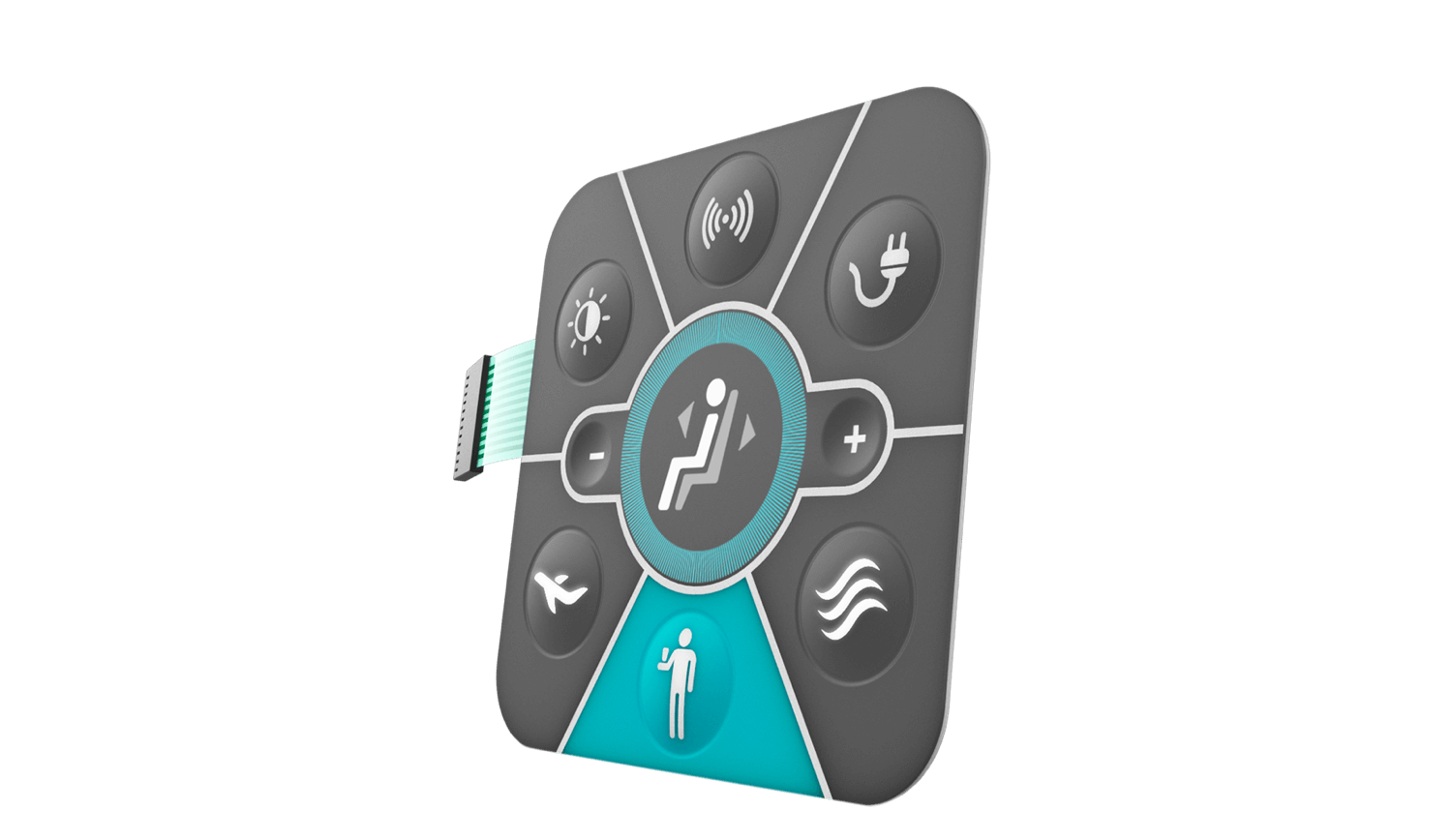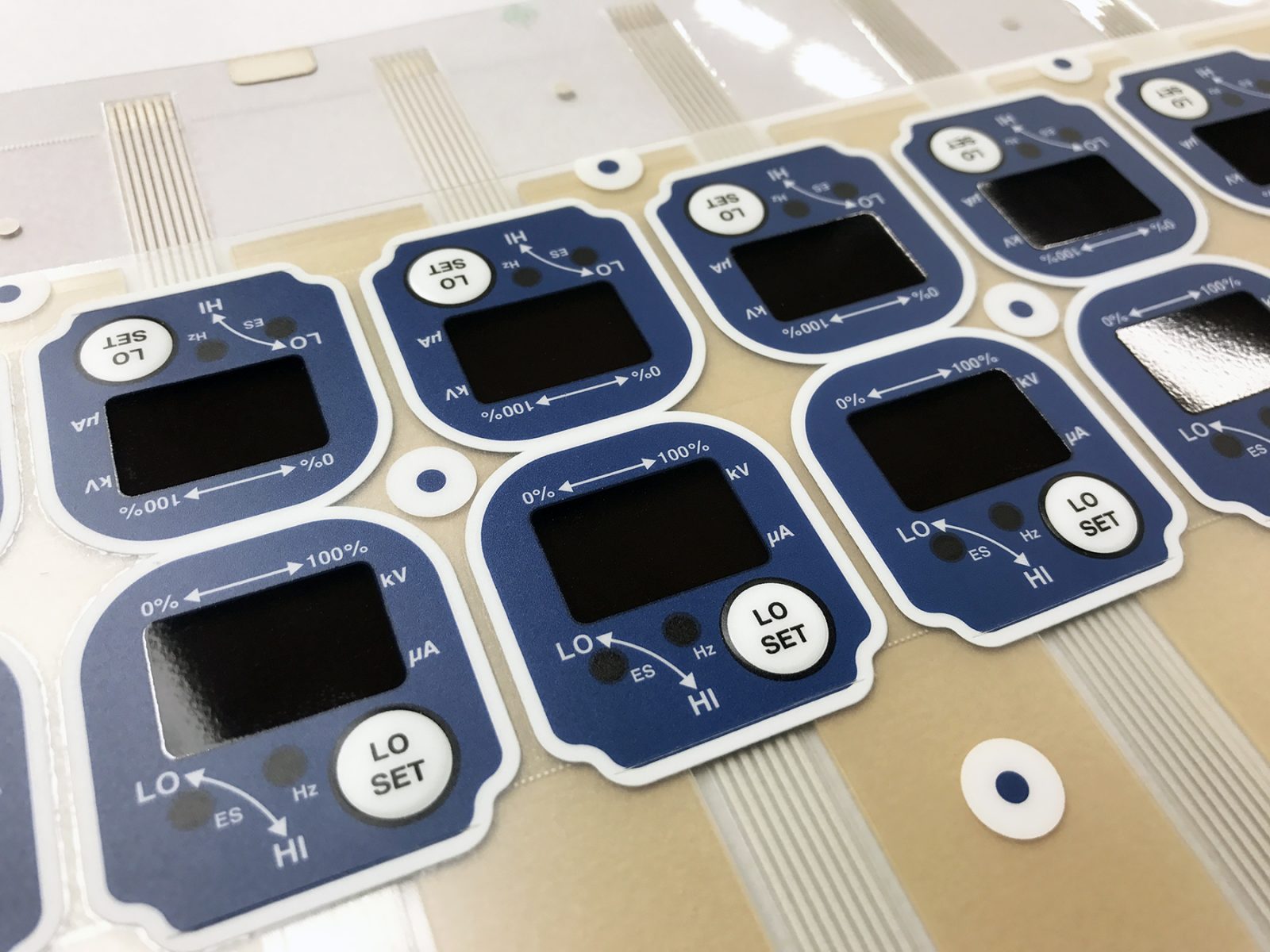How to Make Certain Longevity and Dependability with a High-Quality Membrane Switch
How to Make Certain Longevity and Dependability with a High-Quality Membrane Switch
Blog Article
The Function of Membrane Switches Over in Enhancing Device Usability and Looks
Membrane switches represent a substantial advancement in interface technology, perfectly integrating functionality with aesthetic appeal. Their layout is not just practical, providing receptive controls in a small kind, but likewise customizable, enabling one-of-a-kind branding and visual involvement. As markets significantly focus on individual experience, the ramifications of these features prolong past simple benefit, affecting product layout and customer satisfaction. What remains to be discovered is just how these aspects will develop in action to emerging trends and technical developments, forming the future of human-device interaction.
Comprehending Membrane Switch Technology

The visuals overlay serves as the visible surface, commonly published with signs and tags that guide user interaction. Under this layer, the spacer works as a separator, guaranteeing that the conductive layer just makes call when a button is pushed. The conductive layer, usually made of a conductive ink or product, finishes the circuit and sends out signals to the device's electronic devices.
Sturdiness is a significant benefit of membrane layer switches, as they are resistant to wetness, dirt, and contaminants, making them ideal for numerous settings. Additionally, membrane buttons can be personalized in terms of shape, dimension, and layout, allowing makers to customize interfaces to certain gadget demands. This flexibility adds to their prevalent use throughout sectors, from consumer electronic devices to clinical tools.
Usability Advantages of Membrane Layer Switches
The usability advantages of membrane switches are obvious in their user-friendly layout and straightforward features. These switches facilitate uncomplicated interaction by integrating responsive responses and recognizable icons, which improve the customer experience through clear communication of feature (Membrane Switch). The level account of membrane changes allows for very easy combination right into numerous devices, reducing the finding out contour for individuals not familiar with complicated controls
In addition, membrane layer buttons are typically developed with sensitivity in mind, making it possible for individuals to engage with controls effortlessly. This particular is particularly beneficial in settings where fast feedbacks are critical, such as medical gadgets and industrial machinery. Their resistance to dampness and pollutants better guarantees reputable operation, promoting individual self-confidence in varied settings.
Moreover, membrane layer buttons can be personalized to fit particular applications, suiting unique user requirements and preferences. This versatility promotes a sense of ownership among users, as they can engage with controls that feel tailored to their demands.
Aesthetic Enhancements Through Layout
Visual enhancements play a considerable function in the general allure and functionality of gadgets outfitted with membrane switches. These buttons provide functional layout possibilities that can be customized to satisfy brand name identification and user choices. The capability to incorporate lively read what he said shades, customized graphics, and differed structures allows manufacturers to produce aesthetically striking interfaces that resonate with customers on an emotional degree.
The versatility of membrane layer switch design additionally promotes the integration of distinct shapes and formats, contributing to a streamlined appearance that enhances the user experience. This not only makes tools more appealing however also aids in intuitive navigating, as individuals can conveniently determine functional areas and controls. In addition, advanced printing innovations enable click site the reproduction of elaborate styles and high-resolution photos, better elevating the visual top quality.
Furthermore, making use of backlighting in membrane layer switches can dramatically boost presence and appeal, specifically in low-light settings. This mix of aesthetics and capability fosters an engaging customer experience, making tools not just a lot more enjoyable to make use of yet also much more straightened with modern style patterns. Eventually, aesthetic enhancements through careful membrane layer switch design can transform average devices into compelling, easy to use products.
Applications in Different Industries
In numerous industries, membrane layer switches have come to be important parts that enhance functionality and use throughout a large range of tools. These ingenious buttons locate applications in markets such as medical care, consumer electronics, vehicle, and commercial equipment.
In the health care market, membrane layer buttons are generally utilized in clinical tools, such as diagnostic devices and patient monitoring systems, where they offer user-friendly user interfaces that enhance user communication while maintaining health. In consumer electronic devices, membrane layer switches assist in user-friendly controls in appliances, remote controls, and video gaming devices, providing seamless procedure and aesthetic allure.

Future Fads in Membrane Layer Switches
Arising patterns in membrane buttons are set to change individual interfaces throughout various applications, driven by innovations in technology and raising customer needs for capability and design. One notable trend is the incorporation of capacitive touch modern technology, which provides a more receptive and contemporary individual experience compared to traditional mechanical switches (Membrane Switch). This change not just boosts usability yet additionally enables sleeker device appearances
Additionally, the integration of personalized graphics and backlighting is becoming significantly prominent. Producers are leveraging ingenious printing methods and LED technology to create visually interesting interfaces that deal with details user requires while enhancing device visibility in numerous illumination problems. This modification fosters a stronger psychological link in between individuals and their gadgets.

Final Thought
Finally, membrane view website layer switches over substantially boost both usability and aesthetics in modern gadgets. Their intuitive layout, receptive controls, and personalized graphics promote user communication, especially in vibrant environments. In addition, the incorporation of lively colors and backlighting not only elevates aesthetic appeal but likewise improves capability, permitting for effective navigation in different lights problems. As sectors continue to develop, the flexibility and ingenious potential of membrane layer buttons will likely play an increasingly crucial duty in tool layout and user experience.
Report this page